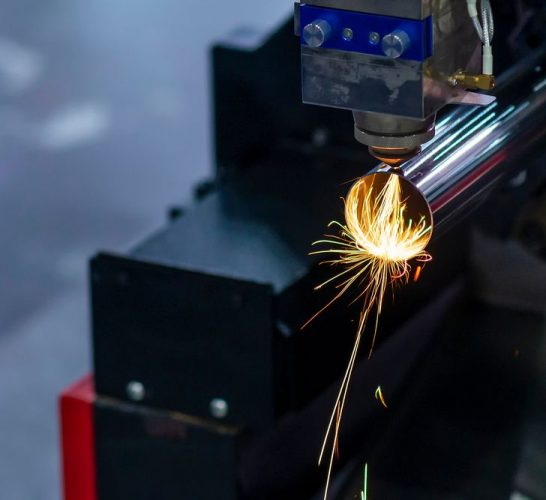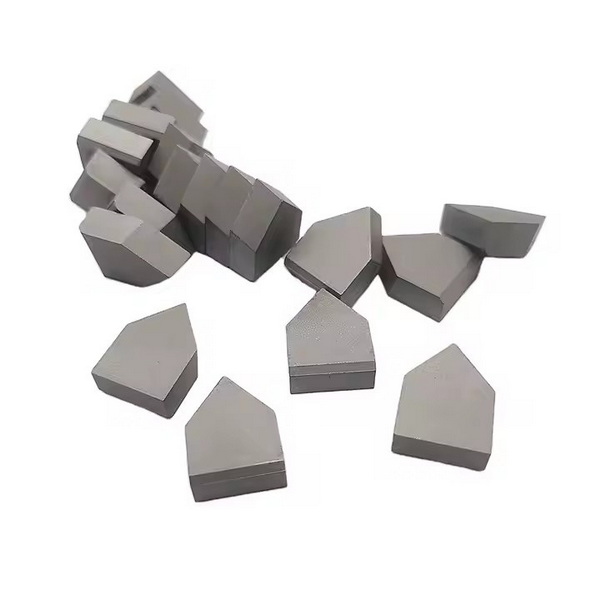Content Menu
● Introduction to Calcium Carbide
>> Production Process of Calcium Carbide
● Calcium Carbide for Acetylene Production
>> Chemical Reaction
>> Applications of Acetylene
>> Industrial Setup for Acetylene Production
● Advantages of Using Calcium Carbide for Acetylene Production
● Challenges and Safety Considerations
>> Environmental Impact
● Industrial Applications of Acetylene Calcium Carbide
>> Role in Chemical Synthesis
● Safety Measures in Acetylene Production
● Future Developments and Technologies
● Conclusion
● Frequently Asked Questions
>> 1. What is the primary use of calcium carbide in industry?
>> 2. How is calcium carbide produced?
>> 3. What are the by-products of the reaction between calcium carbide and water?
>> 4. What are the safety considerations when handling calcium carbide?
>> 5. What are the economic advantages of using calcium carbide for acetylene production?
● Citations:
Calcium carbide, with the chemical formula CaC₂, is a crucial compound in the industrial production of acetylene (C₂H₂), a highly flammable gas used extensively in welding, cutting metals, and as a raw material for various chemical syntheses. The reaction between calcium carbide and water is the foundation of acetylene production, yielding acetylene gas and calcium hydroxide as by-products. This article delves into the process of using calcium carbide for acetylene production, its applications, and the significance of this process in various industries.

Introduction to Calcium Carbide
Calcium carbide is produced by heating lime (calcium oxide) and coke (a form of carbon) in an electric arc furnace at extremely high temperatures, typically above 2000°C. The resulting calcium carbide is a grey or brown solid, depending on its purity, and is highly reactive with water.
Production Process of Calcium Carbide
The production of calcium carbide involves the following steps:
1. Preparation of Quick Lime: Calcium carbonate (limestone) is heated to produce quick lime (calcium oxide).
CaCO3→CaO + CO2
2. Production of Calcium Carbide: Quick lime is then mixed with coke and heated in an electric arc furnace to form calcium carbide.
CaO + 3C→ CaC2 + CO
3. Crushing and Storage: The resulting calcium carbide is crushed into smaller pieces and stored in airtight containers to prevent moisture exposure.
Calcium Carbide for Acetylene Production
Acetylene is produced by reacting calcium carbide with water in a process known as hydrolysis. This reaction is highly exothermic and must be controlled carefully to ensure safety.
Chemical Reaction
The chemical equation for the production of acetylene from calcium carbide is as follows:
CaC2 + 2H2O →C2H2 + Ca(OH)2
This reaction is the basis for industrial acetylene production and is widely used in acetylene generators.
Applications of Acetylene
- Welding and Cutting: Acetylene is used in oxy-acetylene torches for welding and cutting metals due to its high flame temperature.
- Chemical Synthesis: It serves as a precursor for the production of plastics, such as polyvinyl chloride (PVC) and polyethylene.
- Metallurgy: Acetylene is used in the desulfurization of steel.
Industrial Setup for Acetylene Production
In industrial settings, acetylene production involves specialized equipment designed to handle the reaction safely and efficiently. This includes:
- Acetylene Generators: These are used to mix calcium carbide with water under controlled conditions.
- Purification Towers: To remove impurities from the produced acetylene gas.
- Compressors: For pressurizing the gas for storage and transportation.
Advantages of Using Calcium Carbide for Acetylene Production
1. Cost-Effectiveness: In regions with abundant limestone and cheap power, calcium carbide production is economically viable.
2. Versatility: Acetylene produced from calcium carbide is versatile and can be used in various industrial applications.

Challenges and Safety Considerations
- Moisture Control: Calcium carbide reacts violently with water, requiring careful handling and storage.
- Waste Disposal: The by-product, calcium hydroxide, must be disposed of properly.
Environmental Impact
The production of calcium carbide is energy-intensive and generates significant CO₂ emissions, primarily due to the use of coal as a raw material. However, recent studies have explored the use of biomass as a sustainable alternative for reducing the carbon footprint of acetylene production. The bio-based calcium carbide acetylene (BCCA) process shows a lower carbon footprint compared to traditional coal-based methods, offering a promising path towards carbon neutrality in the industry[4][8].
Industrial Applications of Acetylene Calcium Carbide
Acetylene calcium carbide plays a crucial role in various industrial applications, from steel manufacturing to chemical production. It is essential for producing polyvinyl chloride (PVC) and other plastics, which are widely used in construction, automotive, and packaging industries[7]. Additionally, acetylene is used in the production of acetylene black, a form of carbon black that serves as a reinforcing agent in rubber and plastic products.
Role in Chemical Synthesis
Acetylene derived from calcium carbide serves as a precursor for the synthesis of several organic compounds, including vinyl chloride, acrylonitrile, and vinyl acetate. These chemicals are vital in the manufacturing of plastics, synthetic fibers, and various other industrial products[2].
Safety Measures in Acetylene Production
Ensuring safety during acetylene production is critical due to the highly reactive nature of calcium carbide and the flammability of acetylene. Key safety measures include:
1. Temperature Control: The reaction between calcium carbide and water releases significant heat, which must be managed through effective cooling systems to prevent uncontrolled reactions[3].
2. Impurity Management: The quality of calcium carbide affects the purity of acetylene and the safety of the process. Impurities like phosphorus and sulfur can interfere with the reaction, necessitating strict quality control[3].
3. Storage and Transportation: Acetylene gas is highly flammable and explosive, requiring careful storage and transportation practices to avoid accidents[3].
Future Developments and Technologies
While calcium carbide hydrolysis remains a significant method for acetylene production, other technologies such as partial oxidation of methane or LPG are gaining prominence for new capacity additions[5]. Additionally, new methane pyrolysis technologies offer potential growth opportunities in the acetylene industry.
Conclusion
Calcium carbide plays a pivotal role in the production of acetylene, a critical gas in various industrial processes. The reaction between calcium carbide and water is efficient and cost-effective, making it a preferred method for acetylene production. However, it requires careful handling due to its reactivity and the need for proper waste disposal. As the industry moves towards more sustainable practices, integrating biomass into calcium carbide production offers a promising path towards reducing environmental impacts.

Frequently Asked Questions
1. What is the primary use of calcium carbide in industry?
Calcium carbide is primarily used for the production of acetylene gas, which is essential for welding, cutting metals, and as a raw material in chemical synthesis.
2. How is calcium carbide produced?
Calcium carbide is produced by heating lime (calcium oxide) and coke in an electric arc furnace at high temperatures.
3. What are the by-products of the reaction between calcium carbide and water?
The reaction produces acetylene gas (C₂H₂) and calcium hydroxide (Ca(OH)₂).
4. What are the safety considerations when handling calcium carbide?
Calcium carbide reacts violently with water, so it must be stored in airtight containers and handled with care to avoid accidental exposure to moisture.
5. What are the economic advantages of using calcium carbide for acetylene production?
The process is cost-effective in regions with abundant limestone and cheap power, making it an economical choice for acetylene production.
Citations:
[1] https://patents.google.com/patent/CN105085148A/en
[2] https://www.tjtywh.com/a-the-importance-of-acetylene-calcium-carbide-in-industrial-applications.html
[3] https://www.tjtywh.com/how-to-ensure-safety-in-acetylene-production-using-calcium-carbide.html
[4] http://ui.adsabs.harvard.edu/abs/2024GrEE....9.1068J/abstract
[5] https://www.nexanteca.com/blog/202207/will-new-technology-put-acetylene-back-vogue
[6] https://www3.epa.gov/ttnchie1/ap42/ch11/final/c11s04.pdf
[7] https://www.tjtywh.com/a-the-role-of-acetylene-calcium-carbide-in-industrial-applications.html
[8] https://papers.ssrn.com/sol3/papers.cfm?abstract_id=4200789
[9] https://www.nj.gov/health/eoh/rtkweb/documents/fs/0312.pdf
[10] https://chemistry-europe.onlinelibrary.wiley.com/doi/10.1002/cplu.202400247
[11] https://www.alzchem.com/en/company/news/calcium-carbide-for-acetylene-production/
[12] https://www.alzchem.com/en/brands/calcium-carbide/
[13] https://www.tjtywh.com/how-to-safely-transport-and-store-calcium-carbide.html
[14] https://www.tjtywh.com/environmental-challenges-in-calcium-carbide-production-and-tywh-s-solutions.html
[15] http://jbb.xml-journal.net/article/doi/10.1016/j.jobab.2020.04.002
[16] https://www.eiga.eu/uploads/documents/DOC226.pdf
[17] https://en.wikipedia.org/wiki/Calcium_carbide
[18] https://www.eiga.eu/uploads/documents/DOC196.pdf
[19] https://www.raco.cat/index.php/afinidad/article/download/413451/509559
[20] https://www.pyrometallurgy.co.za/InfaconXIV/149-McCaffrey.pdf
















